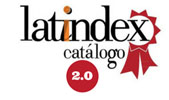Preferences through the centennial user experience in mobile food delivery applications
DOI:
https://doi.org/10.53591/rug.v138i1.2381Keywords:
Users, app, CBC, deliveyAbstract
This study was carried out to analyze preferences through user experience in the behavior of Centennials regarding the use of mobile food delivery applications. To collect the data, 3,080 choices were derived using a full factorial design, from a combination of three attributes and three levels each. Of the complete 243 profiles, 13 profiles were selected using an orthogonal design. To present the preferences of the respondents, the technique of shuffling cards was used. The calculation of the respondents' scores was carried out using the Choice Based Conjoint (CBC) method, the statistical treatment was carried out using the R statistical software. The users consulted did not value positively: the intuitive environments, opening hours, monitoring until delivery, while they are receptive to the remaining attributes by levels, we could define a mostly accepted profile, as a user who wants a practical and intuitive application, that has a menu with photos, an application where an estimated delivery time is indicated of the order, as well as an application that introduces you to all restaurants that have promotions and an application that accepts all forms of payment.
Metrics
References
Akyol, D. (2018). Identifying Decision Preferences of Farmers for Increasing th e Contribution of Manure to the Swiss Energy Supply. . Institute of Environmenta l Engineering, Department of Civil, Environmental and Geomatic Engineering, ET H Zürich, Swiss F.
Anacin, C., Azarcon Jr, D., Gallardo, C., & Velasco, E. (2015). Attrition and Retention in Higher Education Institution: A Conjoint Analysis of Consumer Behavior in Higher Education. Asia Pacific Journal of Education, Arts and Sciences, 1(5), 107-118 . doi:DOI: 10.13140/RG.2.1.1126.1925
Asioli, D., Næs, T., Øvrum, A., & Almli, V. (2015). Comparison of Rating-Based and Choice-Based Conjoint Analysis Models. A. , Food Quality and, 48, 174-184. doi:https://doi.org/10.1016/j.foodqual.2015.09.007.
Azarcon Jr, D. E. (2014). Attrition and retention in higher education institution: A conjoint analysis of consumer behavior in higher education. Asia Pacific Journal of Education, Arts and Sciences, 107.
Burlea, A., Silvia , P., & Adina , D. (2022). The impact of food delivery applications on Romanian consumers’ behaviour during the COVID-19 pandemic. Socio-Economic Planning Sciences, 82 , 101220. doi:https://doi.org/10.1016/j.seps.2021.101220.
Casé, L. R., Doná, S. M., & Garzaniti, R. (2018). La inteligencia a través de las generaciones: Millennials y centennials. Acta de investigación psicológica, 8(2), 90-100. doi:10.22201/fpsi.20074719e.2018.2.08
Cristancho-Triana, G. J., Cardozo-Morales, Y. C., & Camacho-Gómez, A. S. (2022). Tipos de centennials en la red social TikTok y su percepción hacia la publicidad. Revista CEA, 8(17), 1-19. doi:https://doi.org/10.22430/24223182.1933
Dirin, A., Nieminen, M., & Laine, T. (2022). Sentimientos de ser para la experiencia del usuario móvil. Revista internacional de interacción humano-computadora. doi:https://doi.org/10.1080/10447318.2022.2108964
Ferreira Lopes, S. D. (2011). Análisis conjunto. Teoría, campos de aplicación y conceptos inherentes. Estudios y perspectivas en turismo, 20(2), 341 – 366. Obtenido de http://www.scielo.org.ar/scielo.php?script=sci_arttext&pid=S1851-17322011000200005
Forlizzi, J., & Ford, S. (2000). The Building Blocks of Experience:. Proceedings of Dis 2000, 419-423. Obtenido de https://www.makinggood.ac.nz/media/1259/forlizzi_2002_thebuildingblocksofexperience.pdf
Guadarrama Tavira, E., & Rosales Estrada, E. M. (2015). MARKETING RELACIONAL: VALOR, SATISFACCIÓN, LEALTAD Y RETENCIÓN DEL. Ciencia y Sociedad, 307-340. Obtenido de https://www.redalyc.org/articulo.oa?id=87041161004
Guarnieri, F., & David Vieira, F. G. (2023). FOOD DELIVERY NETWORK: NON-HUMANS AS CONSUMPTION MEDIATORS. Revista Pensamento Contemporâneo em Administração, 16(1), 146-160. doi:https://doi.org/10.12712/rpca.v16i1.53063
Hu, Y., & Sun, Y. (2023). Understanding the joint effects of internal and external anthropomorphic cues of intelligent customer service bot on user satisfaction. Data and Information Management. doi:https://doi.org/10.1016/j.dim.2023.100047.
Huang, H.-L. (2023). Challenges for contactless online food delivery services during the COVID-19 pandemic in Taiwan: Moderating effects of perceived government response. Evaluation and Program Planning, 97, 102249. doi:https://doi.org/10.1016/j.evalprogplan.2023.102249.
Hugo Cardenas, F. X., Jimenez Rosero, C. E., Holovatyi, M., & Lara Pazos, P. E. (2020). El impacto de las redes sociales en la administración de las empresas. recimundo, 4(1 ), 173-182. doi:10.26820/recimundo/4.(1).enero.2020.173-182
Igari, R., & Takeuchi, M. (2022). A dynamic model for ranking based conjoint analysis with no-choice options . Behaviormetrika, 50, 263–286. doi:https://doi.org/10.1007/s41237-022-00178-8
Ighomereho, O. S. (2011). Conjoint analysis: A strategic tool for product research. International Journal of Economic Development Research and Investment , 1-9.
Jasso-Peña, F., Gudiño-Paredes, S., & Tamez-Solis, J. P. (2019). Centennials, ciudadanos globales y digitales. Praxis, 15(1), 11-23. doi:DOI: http://dx.doi.org/10.21676/23897856.2981
Jiang, Y., Lai, P.-L., Yang, C.-C., & Wang, X. (2023). Exploring the factors that drive consumers to use contactless delivery services in the context of the continued COVID-19 pandemic. Journal of Retailing and Consumer Services, 72, 103276. doi:https://doi.org/10.1016/j.jretconser.2023.103276.
Johnson, F., Lancsar, E., Marshall, D., Kilambi, V., Muhlbacher, A., Regier, D., . . . Bridges, J. (2013). Constructing Experimental Designs for Discrete-Choice Experiments:. SciVerse SciencieDirect, 3(13). doi:http://dx.doi.org/10.1016/j.jval.2012.08.2223
Karniouchina, E., Moore, W., Rhee, B., & Verma, R. (2009). Issues in the Use of Ratings-based Versus Choice-based. European Journal of Operational Research , 197(1), 340-348. doi:10.1016/j.ejor.2008.05.029 · Source: RePEc
Lord, C., Bates, O., Friday, A., McLeod, F., Cherrett, T., Martinez-Sykora, A., & Oakey, A. (2023). The sustainability of the gig economy food delivery system (Deliveroo, UberEATS and Just-Eat): Histories and futures of rebound, lock-in and path dependency. International Journal of Sustainable Transportation, 17(5), 490-502. doi:https://doi.org/10.1080/15568318.2022.2066583.
Louviere, J. J. (2000). Stated choice methods. Analysis and application. Cambridge: Cambridge University Press.
Macías Rendón, W., Rodríguez-Morales, K., & Barriga Medina, H. R. (2021). Bloqueo COVID-19 y la satisfacción con los proveedores de suministro de alimentos en línea. Estudios Gerenciales, 37(159), 200-209. doi:https://doi.org/10.18046/j.estger.2021.159.4331
Miranda Silva, G., Dias, Á., & Simão Rodrigues, M. (2022). Continuity of Use of Food Delivery Apps: An Integrated Approach to the Health Belief Model and the Technology Readiness and Acceptance Model. Journal of Open Innovation: Technology, Market, and Complexity, 8(3), 114. doi:https://doi.org/10.3390/joitmc8030114.
Montiel Flores, J. C. (2021). EL CONSUMO DE ALIMENTOS Y LAS APLICACIONES MÓVILES: EL CASO DE UNIVERSITARIOS EN GUANAJUATO, MÉXICO. Revista Enfoques, 5(17), 15–31. doi:https://doi.org/10.33996/revistaenfoques.v5i17.102
Moore, W. (2004). A cross-validity comparison of rating-based and choice-based. Intern. J. of Research in Marketing, 21(3), 299 – 312. doi:doi:10.1016/j.ijresmar.2004.01.002
Petcharat, T., & Leelasantitham, A. (2021). A retentive consumer behavior assessment model of the online purchase decision-making process. Heliyon, 7(10), e08169. doi:https://doi.org/10.1016/j.heliyon.2021.e08169
Prasetyo, Y. T., Tanto, H., Mariyanto, M., Hanjaya, C., Young, M. N., Persada, S. F., . . . Perwira Redi, A. N. (2021). Factors Affecting Customer Satisfaction and Loyalty in Online Food Delivery Service during the COVID-19 Pandemic: Its Relation with Open Innovation. Journal of Open Innovation: Technology, Market, and Complexity, 7(1), 76. doi:https://doi.org/10.3390/joitmc7010076.
Sampedro Guamán, C. R., Palma Rivera, D. P., Machuca Vivar, S. A., & Arrobo Lapo, E. V. (2021). Transformación digital de la comercialización en las pequeñas y medianas empresas a través de redes sociales. Revista Universidad y Sociedad, 13(3), 484-490. Obtenido de http://scielo.sld.cu/scielo.php?script=sci_arttext&pid=S2218-36202021000300484
Sánchez Riaño, V., Arango Lozano, C. A., & Sojo Gómez, J. R. (2022). Centennials. La búsqueda del ser en un universo digital, 5(1), 9-20. doi:https://doi.org/10.12795/IROCAMM.2021.v05.i01.01
Sandoval Damián, J. M., Serralde Coloapa, J. L., & Acosta Gonzaga, E. (2021). Aplicativos de entrega em domicílio no CDMX: estratégia de vendas de. RIDE. Revista Iberoamericana para la Investigación y el Desarrollo Educativo, 12(23), e060. doi:https://doi.org/10.23913/ride.v12i23.1104
Sharma, R., Dhir, A., Talwar, S., & Kaur, P. (2021). Over-ordering and food waste: The use of food delivery apps during a pandemic. International Journal of Hospitality Management, 96, 102977. doi:https://doi.org/10.1016/j.ijhm.2021.102977.
Tandon, A., Kaur, P., Bhatt, Y., Mäntymäki, M., & Dhir, A. (2021). Why do people purchase from food delivery apps? A consumer value perspective. Journal of Retailing and Consumer Services, 63, 102667. doi:https://doi.org/10.1016/j.jretconser.2021.102667.
Tandon, A., Kaur, P., Bhatt, Y., Mäntymäki, M., & Dhir, A. (2021). Why do people purchase from food delivery apps? A consumer value perspective. Journal of Retailing and Consumer Services, 63, 102667. doi:https://doi.org/10.1016/j.jretconser.2021.102667.
Torres-Peña, Y., & García-Vidal, G. (2013). El análisis de conjunto: una opción para identificar oportunidades en el mercado. Ciencias Holguín, 19(4), 1-14. Obtenido de https://www.redalyc.org/articulo.oa?id=181559399005
Published
How to Cite
Issue
Section
License
Copyright (c) 2023 Cristian Patricio Alvarez Salazar, Ximena Solange Coyago Loayza, Carlos Bolivar Sarmiento Chugcho

This work is licensed under a Creative Commons Attribution-NonCommercial-NoDerivatives 4.0 International License.
Authors who publish in Revista de la Universidad de Guayaquil know and accept the following conditions:
- The authors retain the copyright in the works, and grant to Revista de la Universidad de Guayaquil the right of the first publication of the work, under an international license Creative Commons Attribution-NonComderderivatives 4.0 that allows third parties to share the work provided that its author and its first publication is indicated this journal.
- The authors retain copyright and guarantee to Revista de la Universidad de Guayaquil the right to publish the work through the channels it deems appropriate.
- The authors are free to share, copy, distribute, execute and publicly communicate the version of the work published in Revista de la Universidad de Guayaquil, recognizing its publication in this journal.
- The authors are authorized to disseminate their works electronically once they are accepted for publication.









































